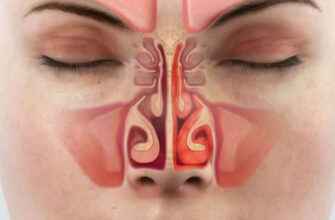Phleboliths, also known as vein stones, are small, round calcifications that can form in the veins. These calcifications are harmless and typically do not require treatment. However, in some cases, phleboliths can cause symptoms that may require medical attention. In this article, we will discuss the symptoms of phleboliths and when to seek medical help.
What are Phleboliths?
Phleboliths are small calcifications that form in the veins. They are typically found in the pelvis, but can also occur in other parts of the body. Phleboliths are made up of calcium deposits and are harmless in most cases.
How Do Phleboliths Form?
Phleboliths form when calcium deposits build up in the walls of the veins. They are most commonly found in the veins that drain the pelvic area, but can also occur in other veins throughout the body.
Who is at Risk of Developing Phleboliths?
Anyone can develop phleboliths, but they are more common in adults and are more prevalent in women than men. People who have a history of venous thrombosis or varicose veins may also be at higher risk of developing phleboliths.
What Are the Symptoms of Phleboliths?
In most cases, phleboliths do not cause any symptoms. However, in some cases, they can cause discomfort or pain in the affected area. Some of the common symptoms of phleboliths include:
Pain or Discomfort
Phleboliths can cause pain or discomfort in the affected area. The pain may be dull or sharp and can range from mild to severe.
Swelling
Phleboliths can cause swelling in the affected area. This swelling may be localized or may spread to other areas.
Difficulty Urinating
In rare cases, phleboliths in the pelvic area can press on the bladder or urethra, causing difficulty urinating.
Blood in Urine
Phleboliths in the pelvic area may also cause blood in the urine, which can be a sign of a more serious condition.
How are Phleboliths Diagnosed?
Phleboliths are typically diagnosed using imaging tests such as X-rays or CT scans. These tests can help your doctor determine the location and size of the phleboliths.
When to Seek Medical Help
If you experience any of the symptoms of phleboliths, it is important to seek medical help. While phleboliths are usually harmless, they can cause discomfort and may be a sign of a more serious condition.
Treatment Options for Phleboliths
In most cases, phleboliths do not require treatment. However, if you are experiencing discomfort or pain, your doctor may recommend pain medication or other treatments to help alleviate your symptoms.
Prevention
There is no sure way to prevent phleboliths from forming. However, maintaining a healthy lifestyle, staying active, and managing any underlying conditions such as varicose veins or venous thrombosis may help reduce your risk of developing phleboliths.
In conclusion, phleboliths are small calcifications that can form in the veins. While they are typically harmless, they can cause discomfort and may be a sign of a more serious condition. If you experience any of the symptoms of phleboliths, it is important to seek medical help. Your doctor can help diagnose and treat any underlying conditions that may be causing your symptoms.











